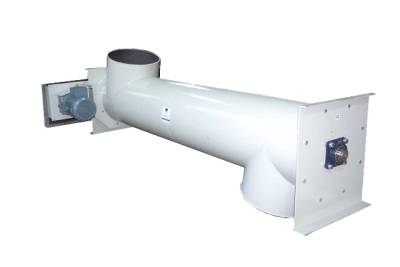Flexible screw conveyors can convey materials in any direction. They can even be routed around fixed obstacles and equipment, making them one of the most popular types of screw conveyors.
From tubular screw conveyors to U trough conveyors, all systems can be susceptible to a range of issues. For example, even the most well maintained or manufactured tube screw conveyor can experience problems with locking and wiring.
Because flexible screw conveyors are one of the most unique and versatile conveyors, their issues can be more specialised and amazing than other conveyors.
Let’s look at some of the most common problems seen with flexible screw conveyors and how to prevent them.
Wear of Tube and Spirals
If you’re working with naturally abrasive materials, the tubes and spirals of your conveyors will be more susceptible to damage with extensive use.
If your tubes and spirals are wearing quicker than they should, you should discuss installing more robust spirals, like double wind spirals or those made from more substantial materials.
You should also assess the tightness of your tube. In some cases, your tube may be too tight, which can cause your spiral and tube to wear down far quicker than usual.
Conveyor Locking or Falling
Is your conveyor jamming or locking randomly? If so, make sure you check the following things:
Power Supply
Are you able to turn your spiral manually? If so, your problem may be with the electrical components of your conveyor.
If the issue is with the electrical components of your conveyor, it’s usually caused by a problem with the thermal overload or a fault with the variable frequency drive (VFD). If you’re experiencing either of these issues, the controls on your conveyor should be able to identify the problem. Once the problem is identified, your manufacturer should be able to assist you with the problem so you can get back to business and avoid any unnecessary downtime.
Wiring
If you still haven’t been able to identify the problem, check the wiring of your screw conveyor. Is the appropriate amount of voltage being supplied to your conveyor? Your manufacturer’s guide should detail the correct amount of voltage needed to power each part of the conveyor. If your current voltage supply is inaccurate, consult this guide or seek assistance from your manufacturer directly.
Spiral
Have you assessed your spiral correctly? When you look at your spiral for damage, make sure you check the feed restrictor. Feed restrictors that are set inaccurately can cause issues with locking or falling. Overloading the conveyor can cause the motor to overload or damage the spiral and cause premature wearing.
Issues Conveying Material
Is your conveyor struggling to transport materials appropriately? If so, you should check the following things:
Spiral Direction
The right rotational direction depends on the type of helix your conveyor has. For example, some conveyors may naturally turn clockwise or anti-clockwise.
If you know the direction your spiral should turn, check its rotational movement: is it functioning correctly or rotating in the wrong direction? You may need to contact your manufacturer to resolve the issue.
The Material in the Hopper
Remember: With flexible screw conveyors, the hoppers will not be completely empty. Have you checked your hopper for a build-up of excess material? Too much material in the hopper may prevent your conveyor from working correctly.
Feed Restriction
Is your spiral getting an adequate feed of material? If this feed restriction isn’t functioning correctly, it may not provide your spiral with enough material to maintain your desired conveyance rate. Check feed restriction and consult your manufacturer for advice if you’re still unable to solve your issues with your flexible screw conveyor.
If you’re experiencing any other issues with your conveyor, it’s always worth checking these additional components and factors:
- Motor: Check your motor to ensure you have the right one for your conveyor
- Welding: Assess the welding techniques used on your spirals to ensure your conveyor has been assembled correctly
- The temperature of your work environment: Make sure the temperature of your work environment is not putting any strain on the functionality of your conveyor
- Materials being conveyed: Are the materials you’re transporting suitable for a flexible screw conveyor? Make sure you’re not conveying anything that the machinery cannot handle.









